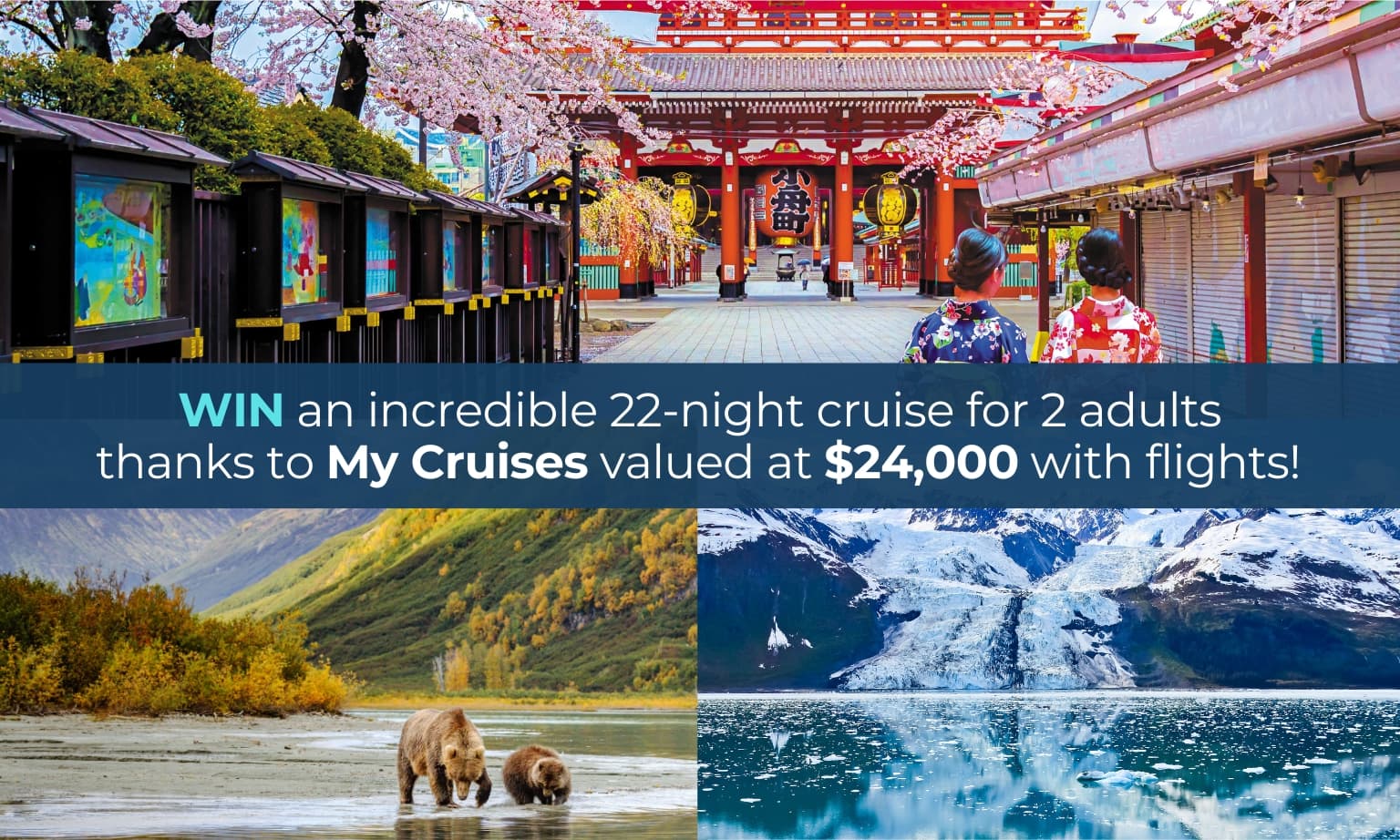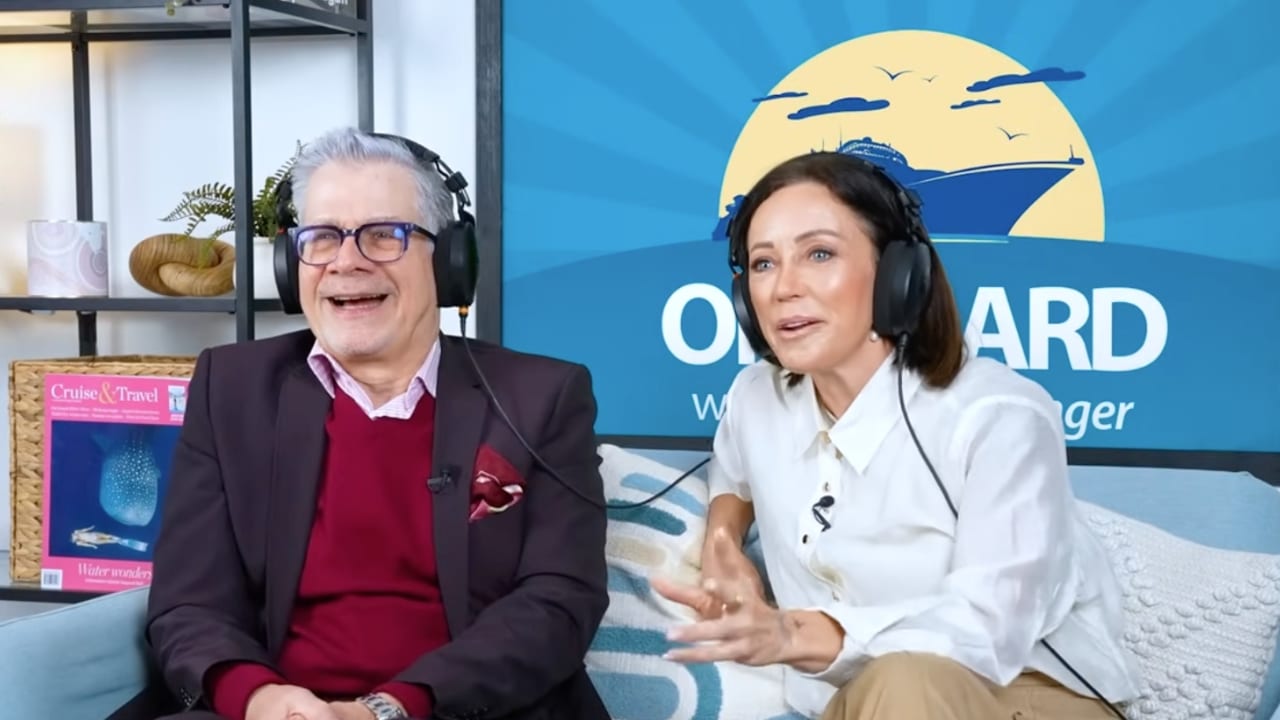We’re used to seeing Hollywood stars or astronauts smash champagne bottles over the bows of new ships as Godmothers at glittering naming ceremonies.
In the Kimberley, Seabourn has performed a historic first. The Wunambal Gaambera Traditional Owners are godparents of the Seabourn Pursuit.
The luxury vessel is sailing her first season in the Kimberley. And on the surface, this gracious gesture seems a small step.
But it also marks the start of a much bigger attempt to, at last, allow the traditional owners to participate in an industry that brings millions to the Kimberley every year.
Seabourn is the first cruise line to appoint Traditional Owners as godparents of a ship.
The region is enjoying its busiest season ever. But as more luxury ships sail this very special Australian adventure destination, one important element has always been missing.

Owners have struggled to find a way to fully participate in the potential tourism brings their land. Hopefully, that is about to change.
Seabourn has helped facilitate something of a breakthrough. An Aboriginal corporation has joined a new initiative launched to open the multi-million dollar centre where Indigenous art and culture can be showcased.
It will allow the owners to stay on their land through the seasons, build the centre, and develop sustainable ways in which their traditional art and culture can not only be kept alive but built into a thriving business for future generations.
As anyone who has visited the Kimberley knows, contact with the Indigenous owners is a wonderful but rare event. This project will go some way to changing that.
“We are proud of how far we’ve come and to be recognised by the tourism industry, government representatives and a global audience. We are honoured to be the first Aboriginal group named as a “godparent” of a cruise vessel,” said Catherine Goonack, Chairperson Wunambal Gaambera Aboriginal Corporation.
Seabourn guests and tourism dignitaries took part in a remarkable “jimɨrri,” Wunambal Gaambera welcome and smoking ceremony. “Our smoking ceremony is done for visitors so that our old people’s spirits won’t follow them,” said Desmond Williams Wunambal Gaambera and Ngula Jar Traditional Owner.
Also in attendance were Ms. Divina D’Anna, Parliamentary Secretary to Deputy Premier Rita Saffioti, Di Bain, Chair of Tourism Western Australia and Natalya Leahy, Seabourn President who commended the Wunambal Gaambera people on the implementation of their Uunguu Visitor Management Plan and Uunguu Visitor Pass to sustainably manage tourism on their country.
Catherine Goonack added: “It’s good to see our people working on Country and sharing our culture in the right way. Living and working on Country is important for us. When we are living and speaking language on Country, we are healthy.
“Thank you, Seabourn and all tour operators travelling through Wunambal Gaambera Country for your support.”
The first stage of the project is being part-funded by Seabourn and the State Government of WA. Paspaley, the famous pearl company that has recently launched its own ship, is making an in-kind contribution of Mother-of-Pearl shells used for the art project.
It will be open to all cruise lines to take their guests to the facility. This will ensure there are enough clients to make it a sustainable business.

The initiative was nurtured by Carnival Group Australia senior destination director Michael Mihajlov. He has a history of forming strong bonds with indigenous groups. He helped forge the tourism partnerships that opened up Papua New Guinea to cruising.
“I’ve been working on this particular project for many years. So it’s been a bit of a dream come true to have a small ship able to access some of these remote communities in Kimberley,” he told Cruise Passenger.
He visited enclosed communities many times to explain and get the necessary permissions. It took some time to convince the local people, and he found showing the community pictures of the work he had done in PNG helped explain what they had to gain.
He formed WhatsApp groups and watched as optimism grew.
He is keen to point out that much of the work was already done by the Wunambal Gaambera people, who have a healthy country policy, visitor passes and were keen to develop a way in which tourism could work for future generations and sustain their lands.
Their history is fascinating.
“We, the Wunambal Gaambera people are saltwater and freshwater people,” their website wunambalgaambera.org.au says.
“Our ancestors have lived and travelled this Country for thousands and thousands of years. We continue the tradition of our old people, living and looking after our Country.
“In 2011, Australian law recognised the unbroken Wanjina Wunggurr connection to our Country and Lalai. Our Elders named us, in the native title determination, Wanjina Wunggurr (Uunguu), common law native title-holders. We call ourselves Wunambal Gaambera people…
“Wunambal Gaambera Country, in the far north Kimberley, is the only place in the world where we can make our life. We need to make sure our Country stays healthy for us to build businesses and livelihoods for our families and future generations. We need to teach our law and culture to our young people on Country. If our Country is healthy, we are healthy.”
Mihajlov said they wanted to create a tourism-focused business. “It’s absolutely the aspiration. All the groups up there have a very, very common vision to be back on country, managing country, connecting with country and having a livelihood from their country.”
He added: “They have their own Healthy Country Plan which maps out very clearly their vision for them getting back to their country, being able to tell traditional stories on country, authentic stories and being able to actually live particularly in the dry season on their country.
“So a lot of the work’s been done by them. It’s really just been a process of us understanding what that vision is and try and find a way that we can support that vision.”
Indeed, the Healthy Country Plan’s vision would resonate anywhere on our planet.
Seabourn’s Indigenous Traditional Owners partnership includes:
- Our people will secure sustainable livelihoods on and from our Country.
- We will be looking after our country in the way of our Wanjina Wunggurr Law.
- We will be living on and making business from our country.
- We will be protecting and sharing our cultural places as our traditional Law says.
- We will be using our traditional knowledge and Western science to care for our country so that no plants and animals are lost.
He explained a dry season camp was mapped out by one of the local people in two stages: one was a visitor centre with a reception area where they can display art and welcome guests.
Stage two is to have accommodation where people can live through the dry country on a rotational basis where they can then meet guests coming ashore and tell their traditional stories.
“In between seasons they can be on their country and actually learn some of the lost traditions, some of the lost technology, particularly developing log rafts and reignite some of those cultures, some of those customs that have been lost.”
Mihajlov says the ideas definitely came from the local people – but Carnival helped kickstart the project.
“Having private sector commit some amount of funding has definitely been a trigger to releasing broader funding from other sources, government sources. It’s a model that we’ve tried and it’s true when the private sector puts skin in the game it works.”
Most importantly, the cruise industry can commit to ensuring that customers come. Scheduling cruise calls from all lines provides certainty that the infrastructure will get used.
“That’s the important part of this story. “The government can’t control the market, but they can build the stuff. But it risks becoming a white elephant unless the private sector commits to using it,” says Mihajlov.
He says the project is a Seabourn initiative which ties in with Carnival Australia’s Reconciliation Action Plan, which is all about developing positive relationships with Indigenous communities.
To start the program, indigenous storytellers will be on board Seabourn sailings telling traditional stories about the lands they are sailing through.
“Long-term, our vision is we would love to have guides actually coming on board, driving zodiac, we’d love to do all those things. But it’s going to be one step at a time as you know, this development game takes time.”
Now things are moving quickly and he predicts that Phase Two – accommodation for local people – will be up by the end of this year.
“By next year, we anticipate every time we go there, we’ll be greeted by traditional owners. There will be a smoking ceremony. There will be a visitor area where local artists will be able to display their artwork.
“Then guests will be co-guided with our guides and local traditional owners to the cave sites where they will have an interpretation of the artwork and then they’ll be able to return to the beach. They will spend time interacting with traditional owners, primarily the artists at the site, and then they’ll return to the ship.”
Ironically, when Mihajlov asked local people about how cruising in the Kimberley was portrayed, they were most upset that their land was often referred to as a “wilderness experience”.
“Their message to me was wilderness suggests no one lives here. But they said: “We live here!” They said they wanted visitors to have a cultural experience.
“That was the catalyst for starting this conversation and really shifting the focus from the Kimberley being about wilderness into the Kimberley, being about learning about an ancient culture, we’re talking 65 to 70,000 years of human habitation in some of these sites.”








